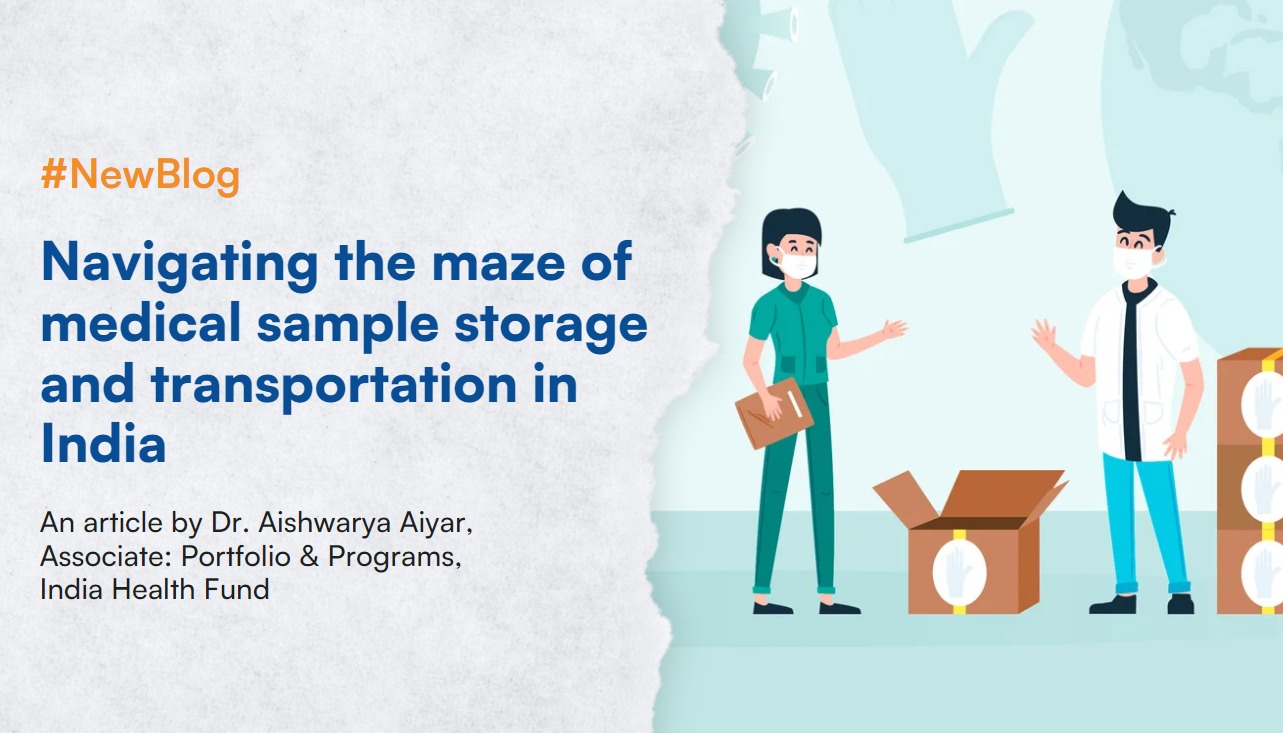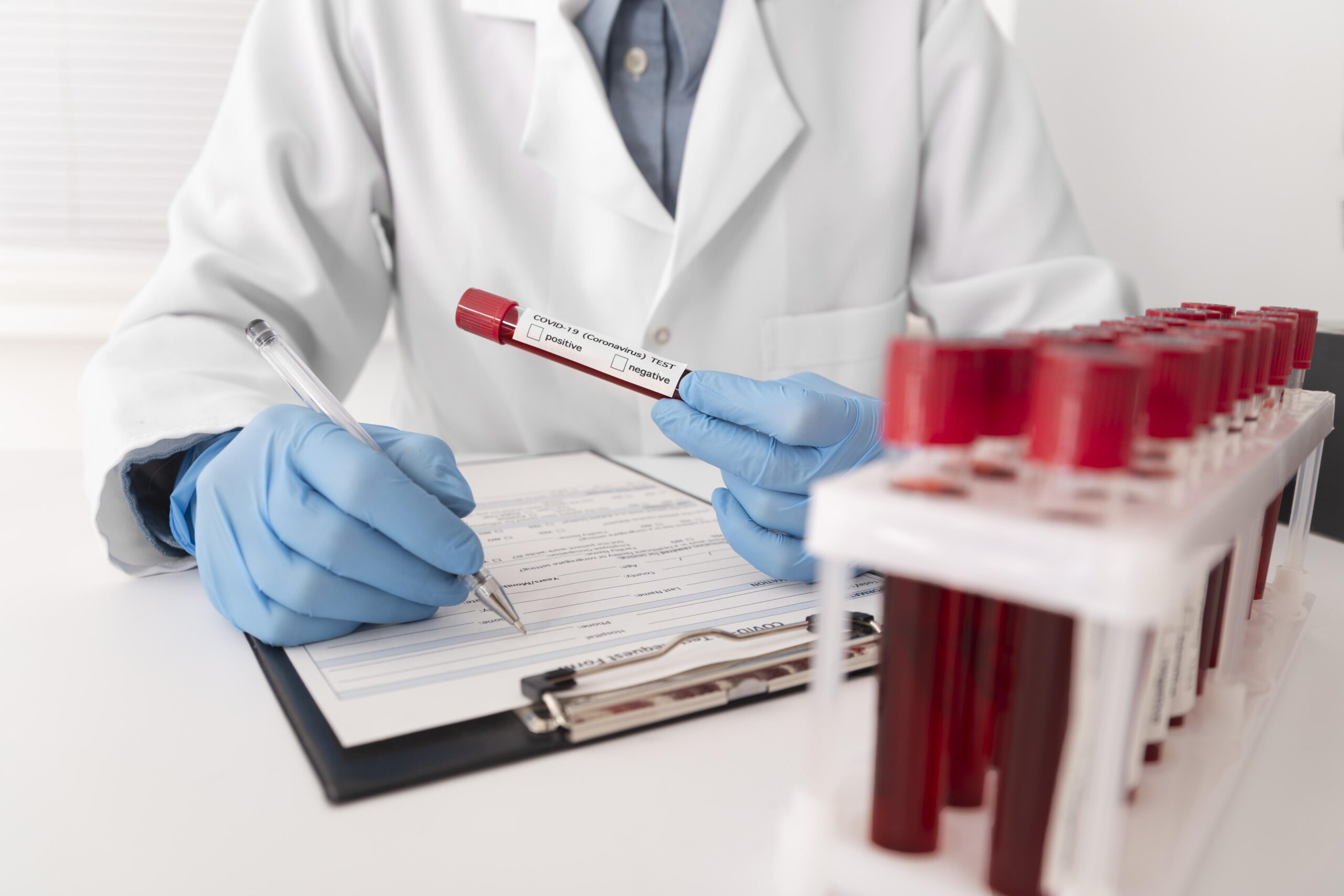- Strengthening the specimen referral system


Over the last century, diagnostic testing has evolved into an essential component of standard medical practice with diagnosis becoming one of the important keys to treatment. Diagnostic testing involves a series of steps with the first one being sample collection and transportation to the testing facility.
To describe it further, diagnostic testing occurs in five phases: pre-pre-analytic, pre-analytic, analytic, post-analytic, and post-post-analytic phase. Errors related to diagnostic testing can occur in any of these five phases. The pre-analytic phase which involves sample collection, patient identification, sample transportation, and sample preparation has been identified as a key point of error and vulnerability in the workflow, contributing to 70% of all mistakes in laboratory diagnostics[1][2]. These errors can be attributed to various reasons including delays in sample transportation, inadequate sample quality and quantity, and lack of compliance by technicians to good laboratory practices.

In India, an individual with symptoms suggestive of any disease usually makes multiple visits to the peripheral health institutes (PHI) before a definitive disease diagnosis is made and treatment is initiated. Delay occurs in every phase in the continuum of care, the critical one being diagnosis. For example, as per a systematic review, delays in diagnosis and treatment of pulmonary tuberculosis in India ranged from 36.0 to 118.0 days, out of which diagnostic delays were a significant contributor.[3] The time lag in transporting samples from the collection point to the diagnostic lab can be a significant factor in overall diagnostic delays.[4] Also, these samples may not be stored
under proper conditions, leading to degradation and loss of viability. Such multifaceted challenges in diagnostic sample logistics, as outlined below, are behind the country’s 38th rank in the World Bank’s Logistic Performance Index 2023.[4]


For Example, the TB SendCard is an innovative sputum storage and transportation device which can be used for DNA extraction in all NAAT based TB testing platforms. It is currently being evaluated for its biosafety feature with the support of India Health Fund.[17] Efforts to include temperature and humidity data recorders in these tools as a mechanism of monitoring sample quality may also be explored. Another recent example is from a study in Nepal which evaluated the impact of a novel transport reagent OMNIgene SPUTUM (OMS) in resource-limited settings: a zonal hospital and a national tuberculosis reference laboratory based in Nepal. The study findings revealed that OMS reduced culture contamination from 12% to 2%, and improved TB detection by 9%. The results also suggested that OMS could perform well as a no cold chain, long-term transport solution for smear and culture testing.[18]
Overall, these efforts seem promising in terms of the ability of these innovations to reduce the biosafety risk by minimizing, inactivating, or neutralizing the disease-causing microbe without compromising diagnostic sensitivity of the testing platform. Additional potential benefits of developing such solutions may include their use in drug resistance surveys where samples need to be collected also from remote and hard to reach areas and where logistic problems related to sample storage and transportation often affect the quality of the survey results. These steps have important implications for National health programs by significantly reducing the costs related to sample storage and transport, increasing access to testing, improving quality of testing and shortening the turn-around-time and time to treatment. This in turn can lead to increasing the program capacity to reach populations living in settings with poor access to diagnostic facilities and ultimately by improving the management of patients by reducing the likelihood of providing multiple samples for disease testing.

Dr Aishwarya is a public health professional who is currently working in the diagnostics vertical as an Associate: Portfolio & Programs at India Health Fund. She is a physiotherapy graduate from Seth GS Medical College & KEM Hospital, Mumbai & a Master’s in Public Health in Health Administration from the Tata Institute of Social Sciences, Mumbai. She has worked in various domains of healthcare such as physiotherapy, program implementation, program monitoring, research & community engagement.
Views expressed are personal.
Sreeramareddy, C. T., Qin, Z. Z., Satyanarayana, S., Subbaraman, R., & Pai, M. (2014). Delays in diagnosis and treatment of pulmonary tuberculosis in India: a systematic review. The international journal of tuberculosis and lung disease : the official journal of the International Union against Tuberculosis and Lung Disease, 18(3), 255–266. https://doi.org/10.5588/ijtld.13.0585
2023 | Logistics Performance Index (LPI). (n.d.). https://lpi.worldbank.org/international/global
Player, J. (2023, July 26). Healthcare access in rural communities in India – Ballard Brief. Ballard Brief. https://ballardbrief.byu.edu/issue-briefs/healthcare-access-in-rural-communities-in-india
Lowe, D. E., Pellegrini, G., LeMasters, E., Carter, A. J., & Weiner, Z. P. (2020). Analysis and modeling of coolants and coolers for specimen transportation. PloS one, 15(4), e0231093. https://doi.org/10.1371/journal.pone.0231093
Felder, Robin. (2011). Preanalytical Errors Introduced by Sample-Transportation Systems: A Means to Assess Them. Clinical chemistry. 57. 1349-50. 10.1373/clinchem.2011.172452.
Bhartia, S., Wahi, P., & Goyal, R. (2019). Reducing delay in laboratory reports for outpatients from 16% to <3% at a non-profit hospital in New Delhi, India. BMJ open quality, 8(4), e000547. https://doi.org/10.1136/bmjoq-2018-000547
Astion ML, Shojania KG,Hamill TR. Classifying laboratory incident reports to identify problems that jeopardize patient safety. Am J Clin Pathol2003; 120:18- 26.
A, E. (n.d.). Pre analytical errors as quality indicators in clinical laboratory. https://austinpublishinggroup.com/public-health-epidemiology/fulltext/ajphe-v3-id1048.php#Top
David W. Dowdy, Minding the Gap: Specimen Referral Systems for Diagnosis of Infectious Diseases, Clinical Infectious Diseases, Volume 64, Issue 6, 15 March 2017, Pages 804–805, https://doi.org/10.1093/cid/ciw820
Saini, V., Kalra, P., Sharma, M., Rai, C., Saini, V., Gautam, K., Bhattacharya, S., Mani, S., Saini, K., & Kumar, S. (2021). A Cold Chain-Independent Specimen Collection and Transport Medium Improves Diagnostic Sensitivity and Minimizes Biosafety Challenges of COVID-19 Molecular Diagnosis. Microbiology spectrum, 9(3), e0110821. https://doi.org/10.1128/Spectrum.01108-21
Maharjan, B., Shrestha, B., Weirich, A., Stewart, A., & Kelly-Cirino, C. D. (2016). A novel sputum transport solution eliminates cold chain and supports routine tuberculosis testing in Nepal. Journal of epidemiology and global health, 6(4), 257–265. https://doi.org/10.1016/j.jegh.2016.04.002